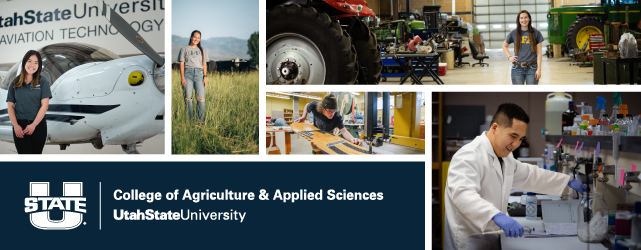Document Type
Article
Journal/Book Title/Conference
Agronomy
Author ORCID Identifier
Tina Sullivan https://orcid.org/0000-0002-1659-9199
Volume
13
Issue
5
Publisher
MDPI AG
Publication Date
4-24-2023
First Page
1
Last Page
19
Creative Commons License

This work is licensed under a Creative Commons Attribution 4.0 License.
Abstract
Many studies have examined individual water-saving management practices for corn (Zea mays L.), but few studies have looked at how combinations of practices might further enhance water optimization. The research objectives of this paper were to evaluate the impact of irrigation technology, irrigation rate, and crop genetics, as well as their interactions, on silage corn yield and forage quality. Trials were conducted in three Utah locations from 2019 through 2021. The results from five site-years indicated that the best water optimization practices varied by site-year. Low-elevation sprinklers commonly applied water more efficiently, with four of the five site-years having improved or equivalent yield compared to mid-elevation sprinklers. Irrigation rate reductions and yield losses were not proportional, as a 25% irrigation reduction resulted in better silage quality and a 7% average yield loss across site-years. Further, targeted deficit irrigation (less water during vegetation and more during maturation) was inferior to a uniform deficit during all growth stages. Drought-tolerant genetics often maintained but did not improve yield in extreme water stress environments compared to non-DT genetics. No cumulative benefits were observed when combining irrigation technology, rate, and DT genetics. Irrigation technology had the greatest potential of the three factors to optimize water use in silage corn production in the Western U.S. region.
Recommended Citation
Sullivan, T.; Yost, M.A.; Boren, D.; Creech, E.; Kitchen, B.; Violett, R.; Barker, B. Impacts of Irrigation Technology, Irrigation Rate, and Drought-Tolerant Genetics on Silage Corn Production. Agronomy 2023, 13, 1194. https://doi.org/10.3390/agronomy13051194


